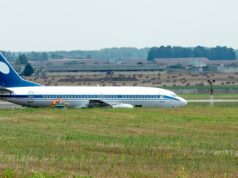
Where do unions come from?
Greetings and welcome back to this series on organized labor in the airline industry. Building off my previous article about what a union is and who is in one, let us delve quickly into where unions come from. First, take a moment to reflect on the following:
- Five-day work week with weekends off
- Minimum wage
- Minimum working age (no child labor)
- Time off and paid vacation
- Medicare
- Social Security
- 8-hour work day
- Unemployment compensation
- Safety standards in the workplace
- Health benefits and paid sick leave
- Universal suffrage and the Voting Rights Act (1965)
Each of these were negotiated, lobbied, and fought for by unions.
In Roman times, groups of craftsmen who safeguarded and secured the secrets of traditionally imparted technology were known as collegium – literally meaning in Latin “persons working together”, ultimately giving us the words college and colleague. This ancient arrangement offered a blueprint for skilled laborers in Medieval Europe providing reliable products and services while improving their status and quality of life. From this point, all modern labor unions can trace their roots to these trade guilds – groups of artisans and merchants who oversaw the practice of their craft or trade and provided training in that work to its members. This system controlled access to the trade itself (i.e., who was admitted to the guild), and in turn ensured consistency and quality workmanship, in addition to establishing minimum expectations for payment of services and work performed. This concept remains at the core of labor unions today – providing training, career support, appropriate benefits and wages, along with dependable, high-quality work.
In the U.S., the tradition of organized labor was introduced in the mid-19th century in response to the social and economic impacts of the Industrial Revolution. Although the Knights of Labor emerged as a major force in the late 1880s alongside other similar organizations such as the American Federation of Labor and the Congress of Industrial Organizations (later the AFL-CIO), unions struggled for survival until Franklin D. Roosevelt’s New Deal policies of the 1930s. In particular, the Wagner Act legally protected, for the first time, the right of workers and unions to organize.
At the same time, air carriers were continuing to expand. The pilots working for these companies were paid little and pushed hard by managements to fly – regardless of fatigue, weather, or aircraft mechanical issues. Realizing that they needed a way to amplify their voice and collectively speak to their companies and federal legislators about low levels of safety and compensation, pilots turned to unionizing in order to be heard and have their issues properly addressed. In response, Congress tucked the budding airlines into existing railway statutes governing procedures for collective bargaining for those unionized employees. Thus, airline pilot negotiations are not regulated by the National Labor Relations Act (NLRA), which was established to support trade unions throughout the U.S., but rather by the Railway Labor Act (RLA). Not only was this intended to streamline the negotiating process for these unique transportation sector workers, but most importantly, to prevent the disruption of interstate commerce due to lockouts (by employers) and strikes (by employees).
In next month’s Grey Matter, we will review the services you receive as a union member, as well as the dues you pay in exchange for those services.



















































